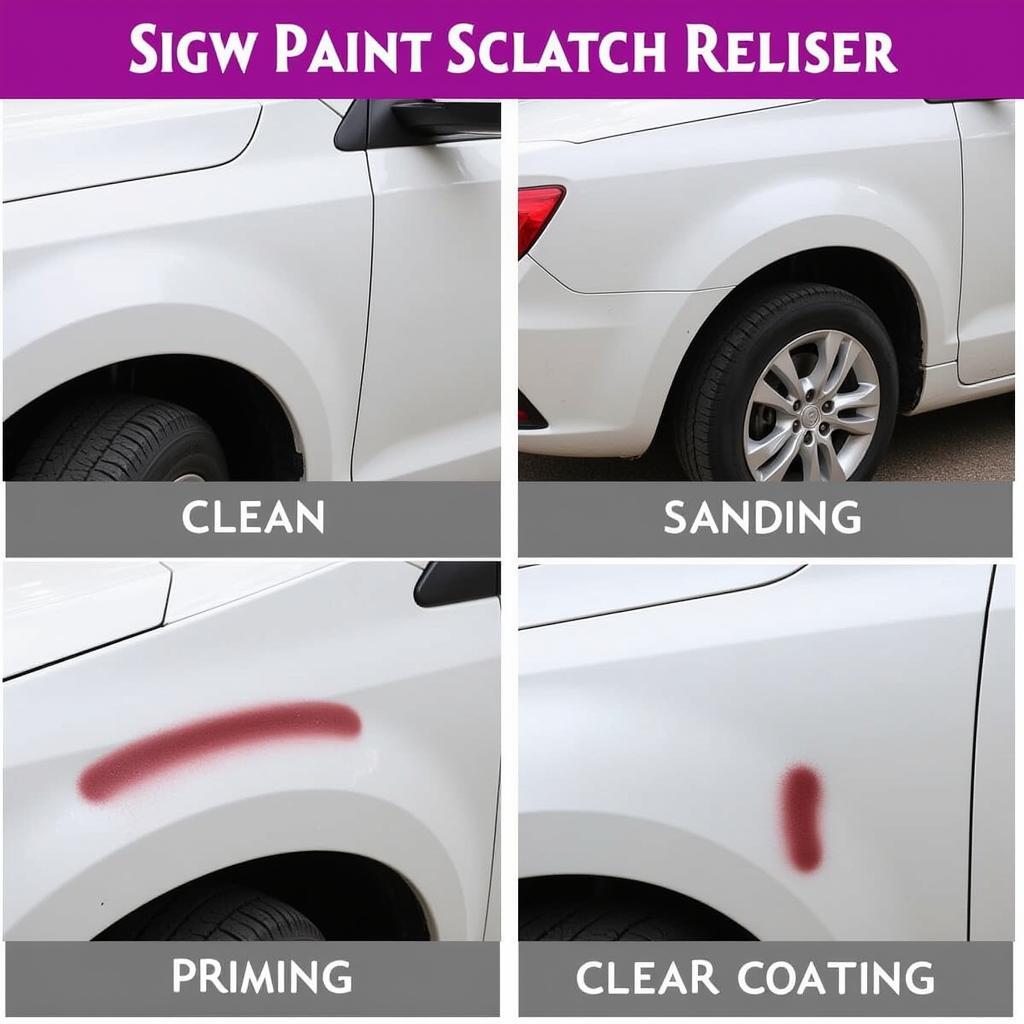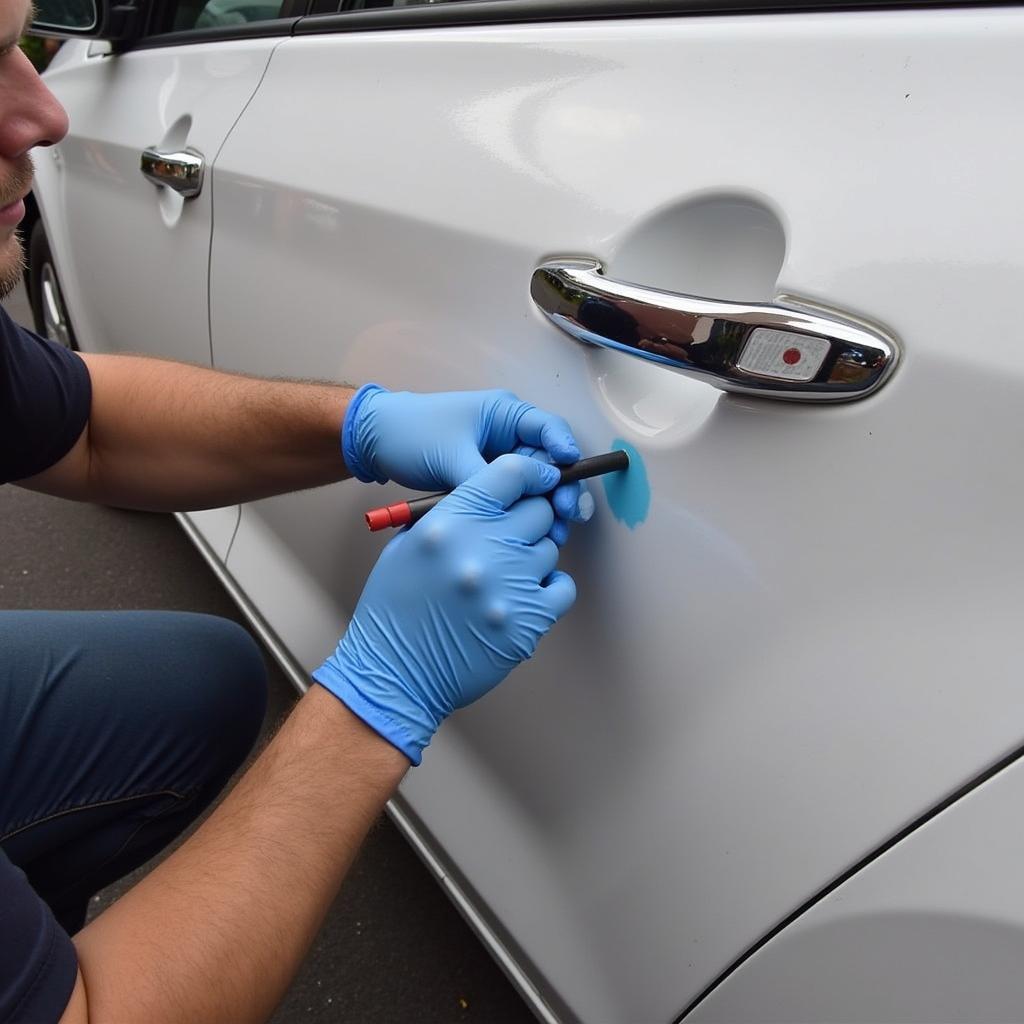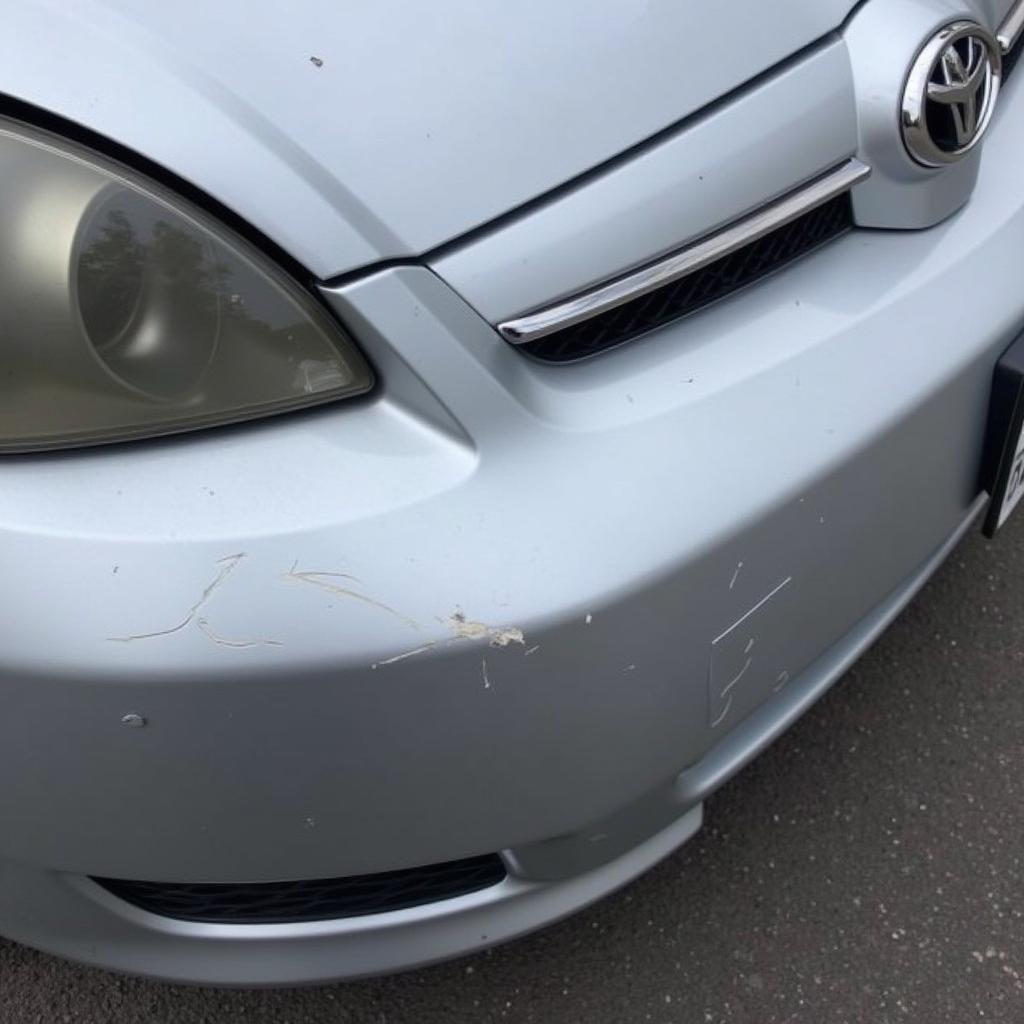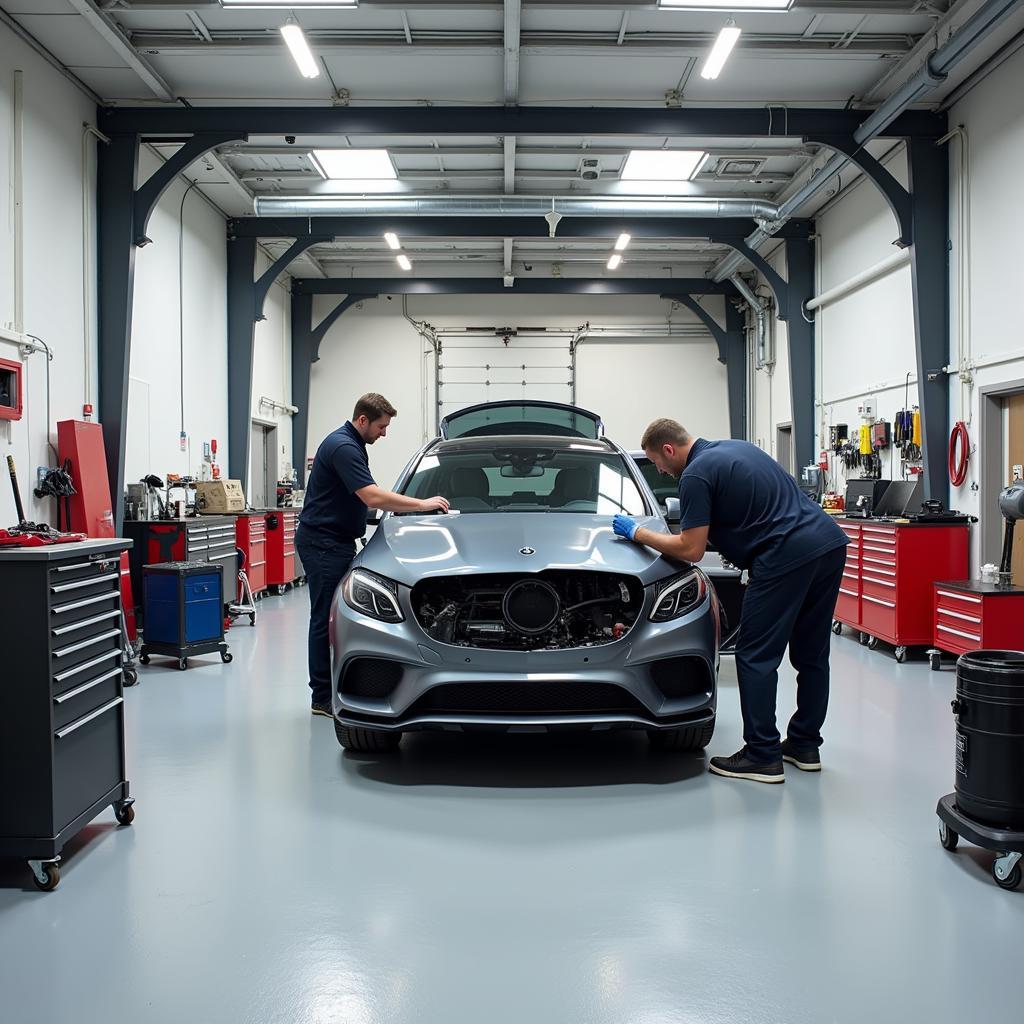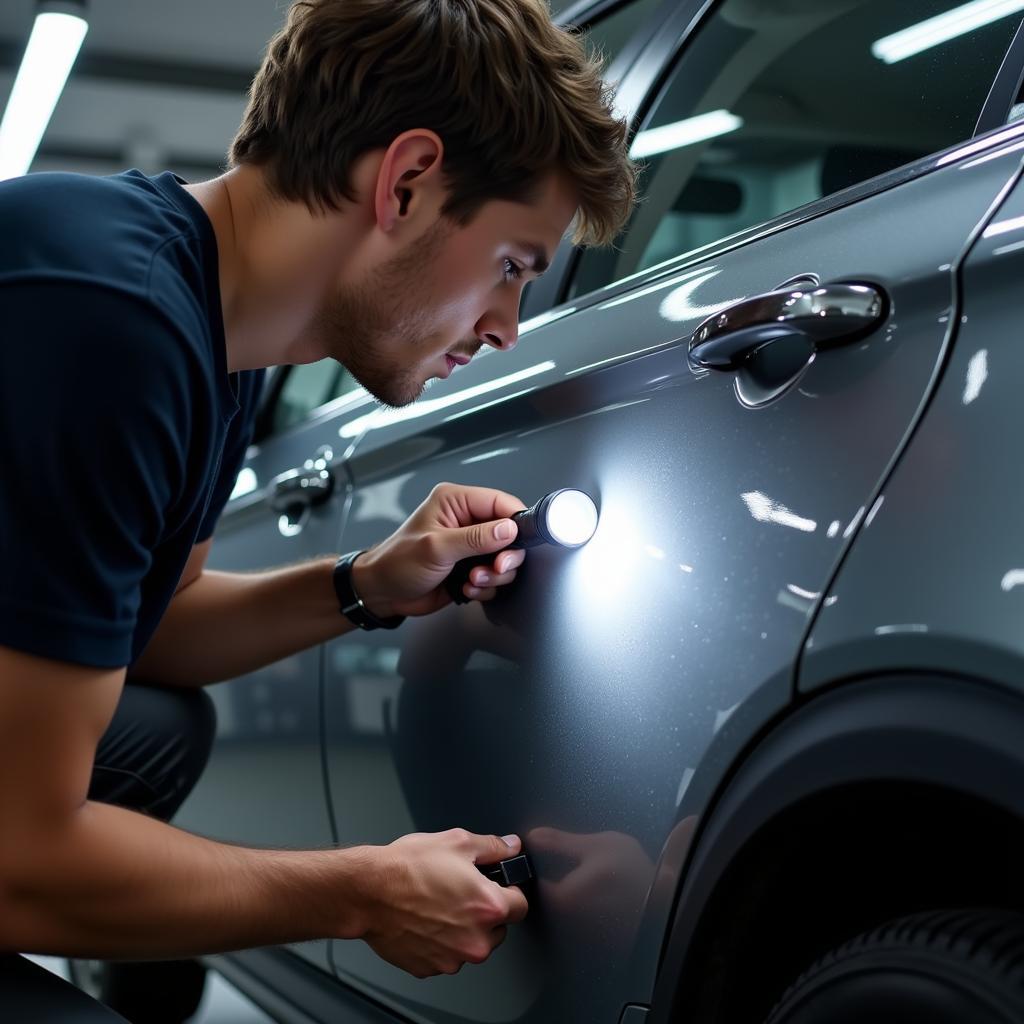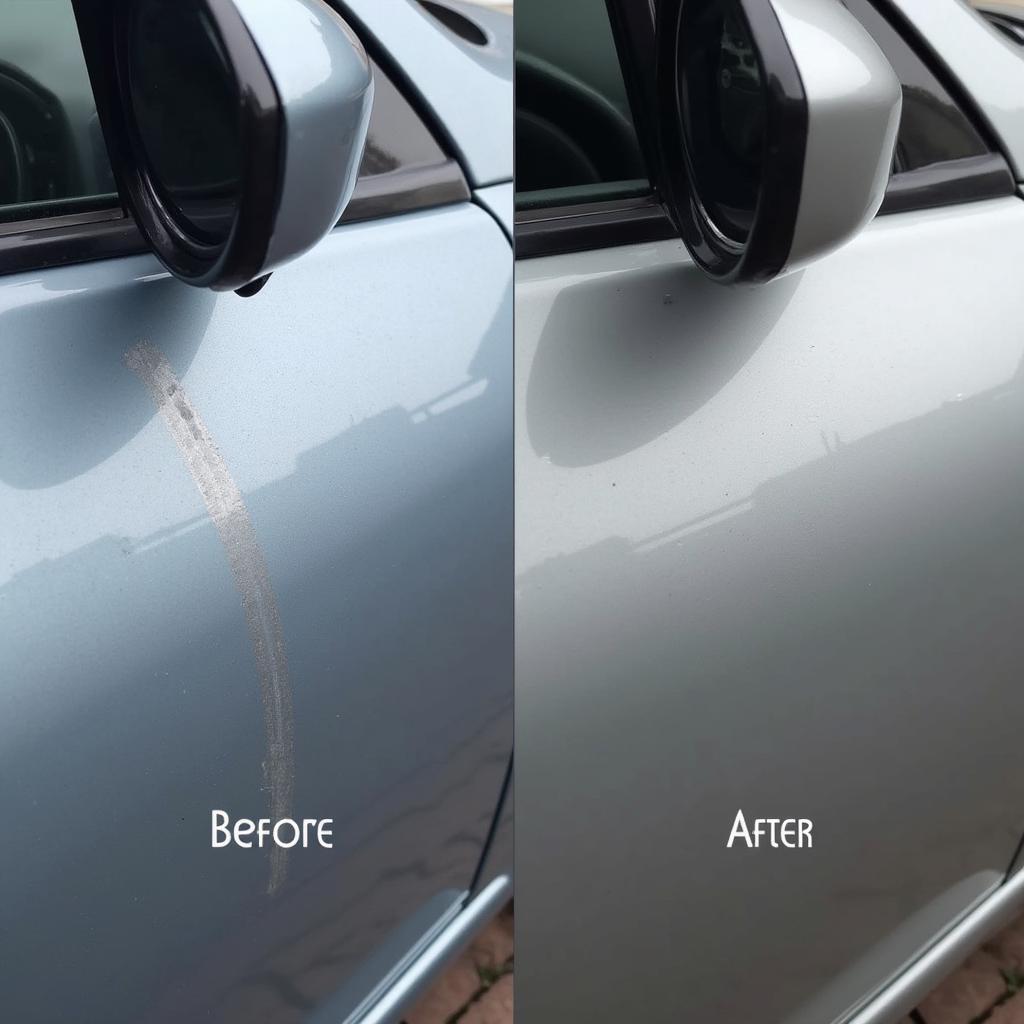
Before & After Spot Paint Repair
Spot paint repair is a cost-effective solution for minor car paint damage, allowing you to address scratches, chips, and blemishes without a full-blown paint job. Whether you’re dealing with road rash, parking lot mishaps, or everyday wear and tear, this comprehensive guide will equip you with the knowledge and techniques to achieve professional-looking results from the comfort of your own garage.
Understanding Spot Paint Repair
Spot painting involves applying paint to a limited area of your car’s bodywork, blending it seamlessly with the surrounding factory finish. This technique is ideal for small to medium-sized imperfections that haven’t penetrated the metal substrate.
 Before & After Spot Paint Repair
Before & After Spot Paint Repair
Gathering the Necessary Tools and Materials
Before embarking on your spot paint repair journey, gather the essential tools and materials:
- Touch-Up Paint: Purchase a high-quality touch-up paint kit that precisely matches your car’s paint code. This usually includes primer, base coat, and clear coat.
- Sandpaper: Acquire a variety of sandpaper grits, ranging from 200 to 2000, for smoothing imperfections and feathering paint edges.
- Masking Tape and Paper: These are crucial for protecting adjacent areas from overspray and creating clean paint lines.
- Cleaning Solution: Use a dedicated automotive cleaning solution and microfiber cloths to remove dirt, grease, and wax from the repair area.
- Paint Applicators: Choose appropriate applicators such as fine-tipped brushes, toothpicks, or touch-up pens based on the size and type of damage.
- Rubbing Compound and Polish: These are essential for achieving a smooth, glossy finish by removing imperfections and blending the repaired area.
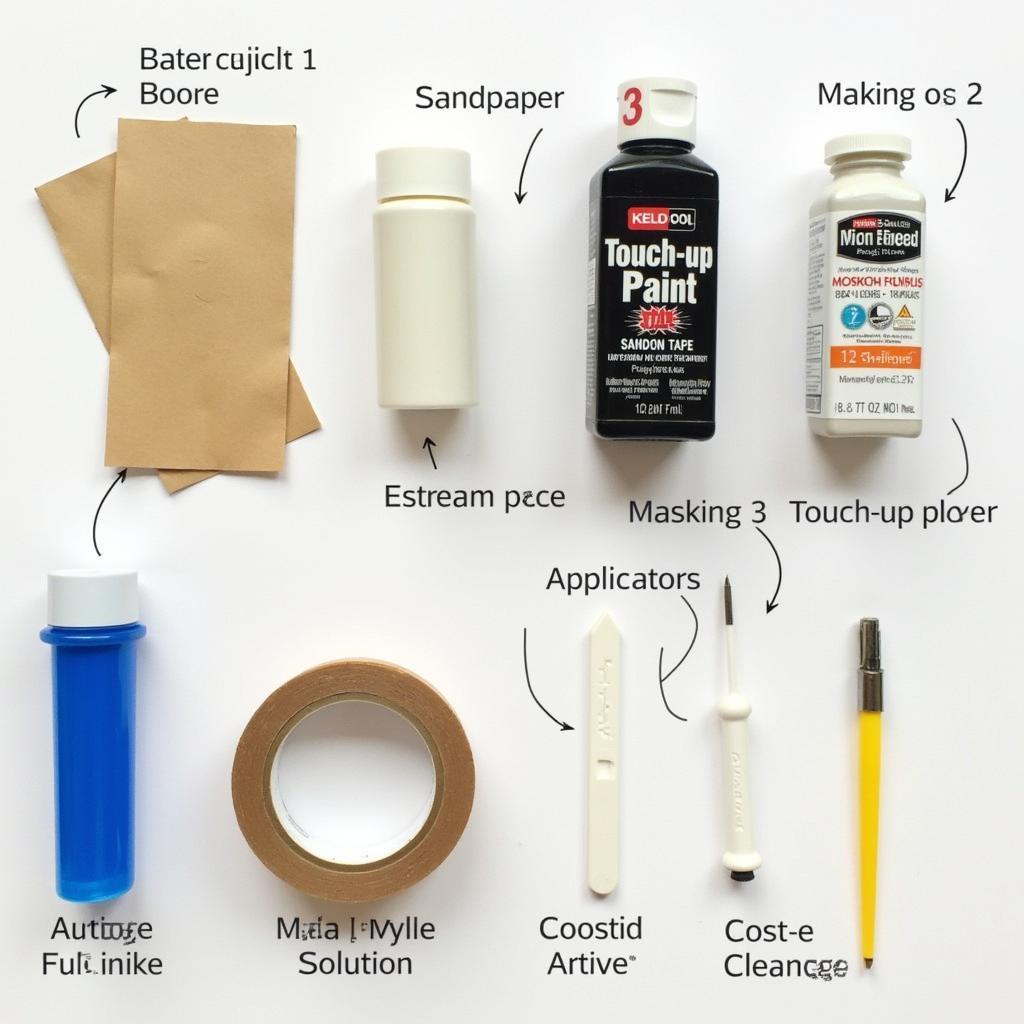 Essential Tools for Spot Paint Repair
Essential Tools for Spot Paint Repair
Step-by-Step Guide to Spot Painting Your Car
Follow these detailed steps to execute a successful spot paint repair:
- Preparation is Key: Thoroughly clean the repair area using an automotive cleaning solution and microfiber cloths. Allow the area to dry completely.
- Sanding Down Imperfections: If the damage includes raised areas or deep scratches, use 200-grit sandpaper to smooth them out. Gradually increase the grit to 400 and then 600, feathering out the edges of the damaged area.
- Masking for Protection: Apply masking tape and paper around the repair area to protect adjacent panels and trim from overspray. Ensure clean, precise lines for a professional finish.
- Priming (If Necessary): If the damage exposes bare metal, apply a thin coat of primer to the affected area using a fine-tipped brush. Allow the primer to dry completely before proceeding.
- Applying the Base Coat: Using a touch-up pen or brush, carefully apply thin layers of base coat to the damaged area. Allow each layer to dry completely before applying the next. Aim for a slightly raised surface to allow for sanding and leveling.
- Clear Coat Application: Once the base coat has dried, apply two to three thin coats of clear coat, allowing sufficient drying time between each application. The clear coat provides protection and a glossy finish.
- Sanding and Polishing: After the clear coat has cured (usually 24-48 hours), use 1000-grit sandpaper to level the repaired area with the surrounding paint. Gradually increase the grit (1500, 2000) to achieve a smooth surface.
- Final Buffing: Apply rubbing compound to a clean microfiber cloth and buff the repaired area using circular motions. Follow with a polishing compound to restore shine and blend the repair seamlessly.
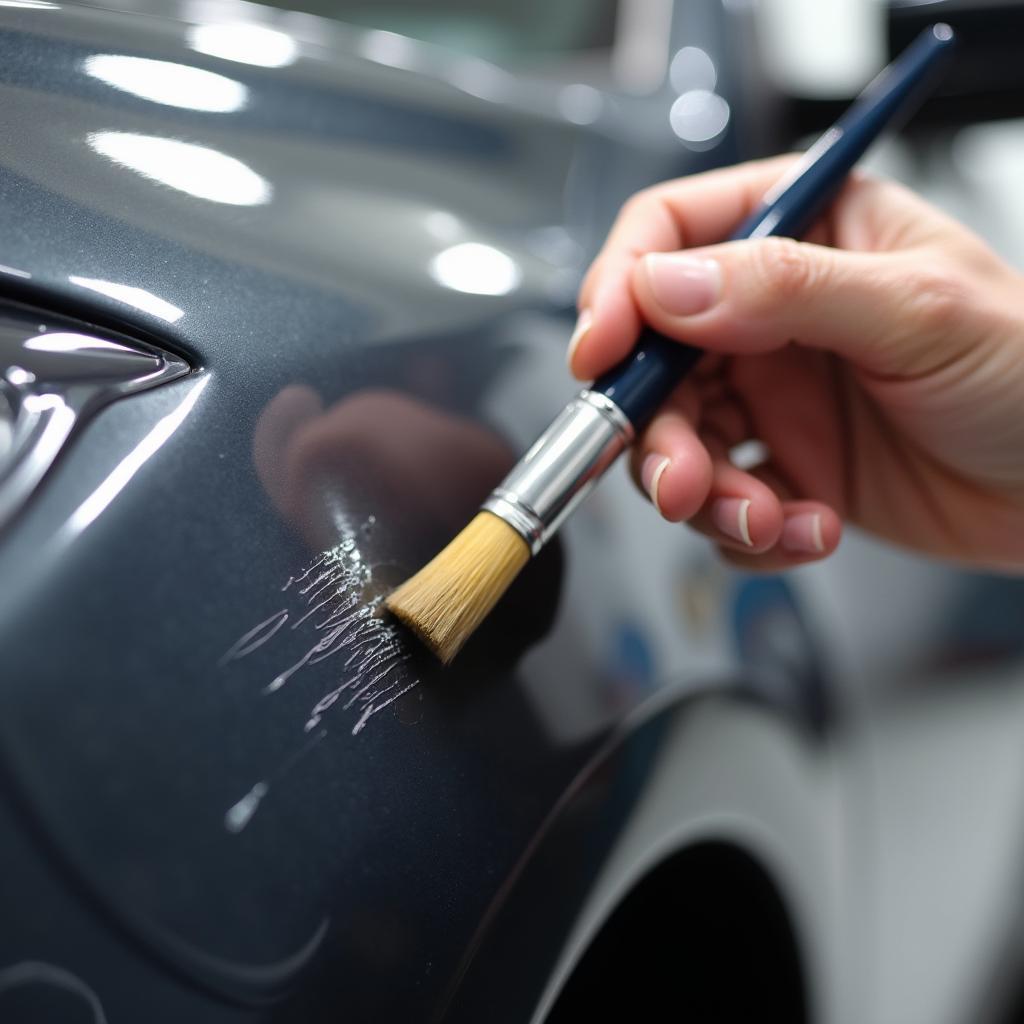 Applying Touch-Up Paint to a Car Scratch
Applying Touch-Up Paint to a Car Scratch
Tips for Professional-Looking Results
- Practice Makes Perfect: Before working on your car, practice your technique on a spare panel or inconspicuous area to gain confidence.
- Patience is Crucial: Allow ample drying time between each coat of primer, base coat, and clear coat to prevent runs or imperfections.
- Work in a Well-Ventilated Area: Ensure adequate ventilation to avoid inhaling paint fumes.
- Less is More: Apply thin coats of paint to prevent runs and ensure even coverage.
When to Consult a Professional
While spot paint repair is an effective DIY solution for minor damage, certain situations warrant professional intervention:
- Extensive Damage: Large areas of damage, deep dents, or rust require specialized tools and expertise.
- Color Matching Issues: If you’re unsure about matching your car’s paint color, a professional can ensure a seamless blend.
- Lack of Experience: If you’re uncomfortable with the process or lack the necessary tools, seeking professional help is advisable.
Conclusion
Spot paint repair is an invaluable skill for any car owner, empowering you to address minor paint imperfections and maintain your car’s appearance. By following these step-by-step instructions and expert tips, you can achieve professional-looking results and restore your car’s pristine look. Remember, practice makes perfect, so don’t be afraid to start small and gradually hone your skills.
For those seeking assistance with more complex repairs or paint matching, consult a reputable auto body shop to ensure a flawless finish.

